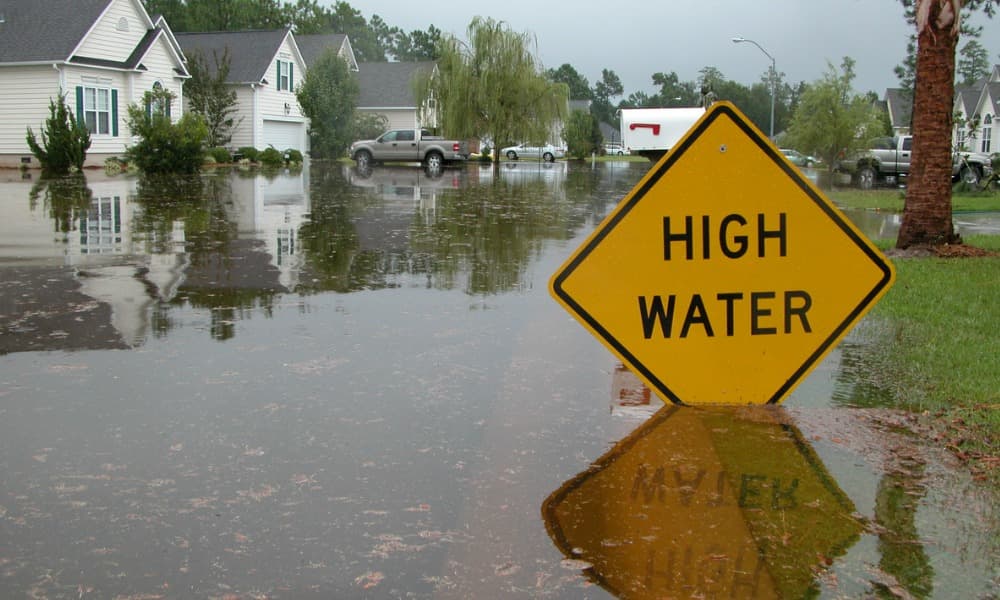Investing in an insurance policy with natural disaster protection can save you from significant future expenses.
Key takeaways
- Natural disasters are common in some parts of the country, often doing significant damage
- Most of these catastrophes require supplemental insurance coverage for full protection
- The amount you’ll pay depends on the likelihood of the disaster hitting the region
- You’ll need to assess your risk to determine whether you need coverage for a specific disaster type
According to Statista, there were 421 natural disasters globally in 2022, up from the 406 recorded in 2021. The Asian Pacific region was the hardest hit, but the United States experienced 18 disaster events that caused $175.2 billion in damage, including the $112.9 billion in damage caused by Hurricane Ian.
The immense damage a natural disaster can generate makes having adequate insurance essential. Here’s a look at how home insurance can protect against natural disasters and some policy options you can explore to defend your property.
Coverage options for natural disasters
Home insurance and natural disasters are a tricky combination because your primary insurance doesn’t always protect you against every risk. While your standard home insurance policy likely covers damage from fires, lightning, wind, falling objects, ice, snow, and volcanic eruptions, it probably doesn’t cover damage from earthquakes and flooding. Standard homeowners insurance also doesn’t cover hurricane damage in many coastal areas because of the elevated risk.
Depending on where you live, you may need to invest in separate earthquake, flood, or hurricane insurance to fully protect your property. And these policies may include a significant deductible. New York, Florida, and 17 other states allow insurers to charge a hurricane deductible, which is usually between 1% and 10% of your home’s insured value and can inflate your overall expenses in the event of a catastrophic event. Also understand that this hurricane insurance covers wind damage only, so you may need a separate policy that covers flood damage if you live in a hurricane-prone area.
It’s also worth noting that if you obtain flood coverage through the National Flood Insurance Program, your policy will only cover $250,000 for your dwelling and $100,000 for its contents. Depending on the value of your home and belongings, you may need additional private flood insurance for full protection if you live in a high-risk area.
Understanding your current coverage limits and your risk can help you determine whether you need supplemental insurance and how much to purchase.
Assessing your risk and insurance needs
The chances of your home experiencing a natural disaster depend on your location. If you live near a fault line in the western part of the country, the risk of your home suffering earthquake damage is far higher than it would be for someone living in Vermont. The United States Geological Survey (USGS) offers information on fault lines and earthquake hazards that can help you assess your risk.
Likewise, homeowners on America’s eastern and southern coasts are more likely to experience a hurricane than those living inland, particularly if they own property near the water. Hurricane insurance is highly recommended in places like Florida and Louisiana, and storms can even hit New England and New York, albeit usually with less intensity. The National Hurricane Center offers information on the areas most likely to experience a storm surge, helping you determine if you live in a high-risk area.
One natural disaster that can occur almost anywhere nationwide is flooding. A location with a 1% chance or higher of experiencing flooding each year is considered at risk, as there’s a 25% or greater chance of experiencing a flood during a typical 30-year mortgage. The Federal Emergency Management Agency (FEMA) has flood maps you can consult to determine your property’s specific risk.
Using these tools allows you to pinpoint the areas of the country most prone to specific natural disasters. From there, you can invest in supplemental policies that offer the protection you need.
Filing a claim for natural disaster damage
If you experience damage during a natural disaster, the first step is to contact your insurance company. Your insurance provider will let you know the specifics of your coverage and deductible and send an adjuster to your property so you can begin the repair process.
You’ll want to avoid some common mistakes before and after the adjuster visits to minimize the problems you’ll encounter. For starters, don’t throw anything out. Putting broken belongings in the trash might be tempting, but the adjuster needs to see these items to substantiate your loss.
If your home is unlivable immediately following the event, you can make temporary repairs, but the cost of these quick fixes is part of your total settlement, so it’s best to leave as many of them as possible until after the adjuster assesses the damage.
You’ll also want to make a list of the damage you want the adjuster to see. Getting a home inspection before the adjuster comes in will minimize the chance that you’ll miss something that could cost you significantly.
Also remember that you don’t have to accept the adjuster’s offer. You can work with your insurance provider’s claims department to negotiate a settlement, particularly if you have proof to back up your damage claims.
Get the coverage you need
Mother Nature can do significant damage to your property, and in many cases, you might not see it coming. As a result, it’s best to cover your home against any natural disasters that are likely to hit your area because the alternative is a badly damaged residence with no additional protection.
If you’re interested in exploring your natural disaster insurance options, NICRIS Insurance Agency is standing by. We can help you find the best – and most affordable – policies based on your home’s location and risk. Contact NICRIS for more information or to get a quote.

